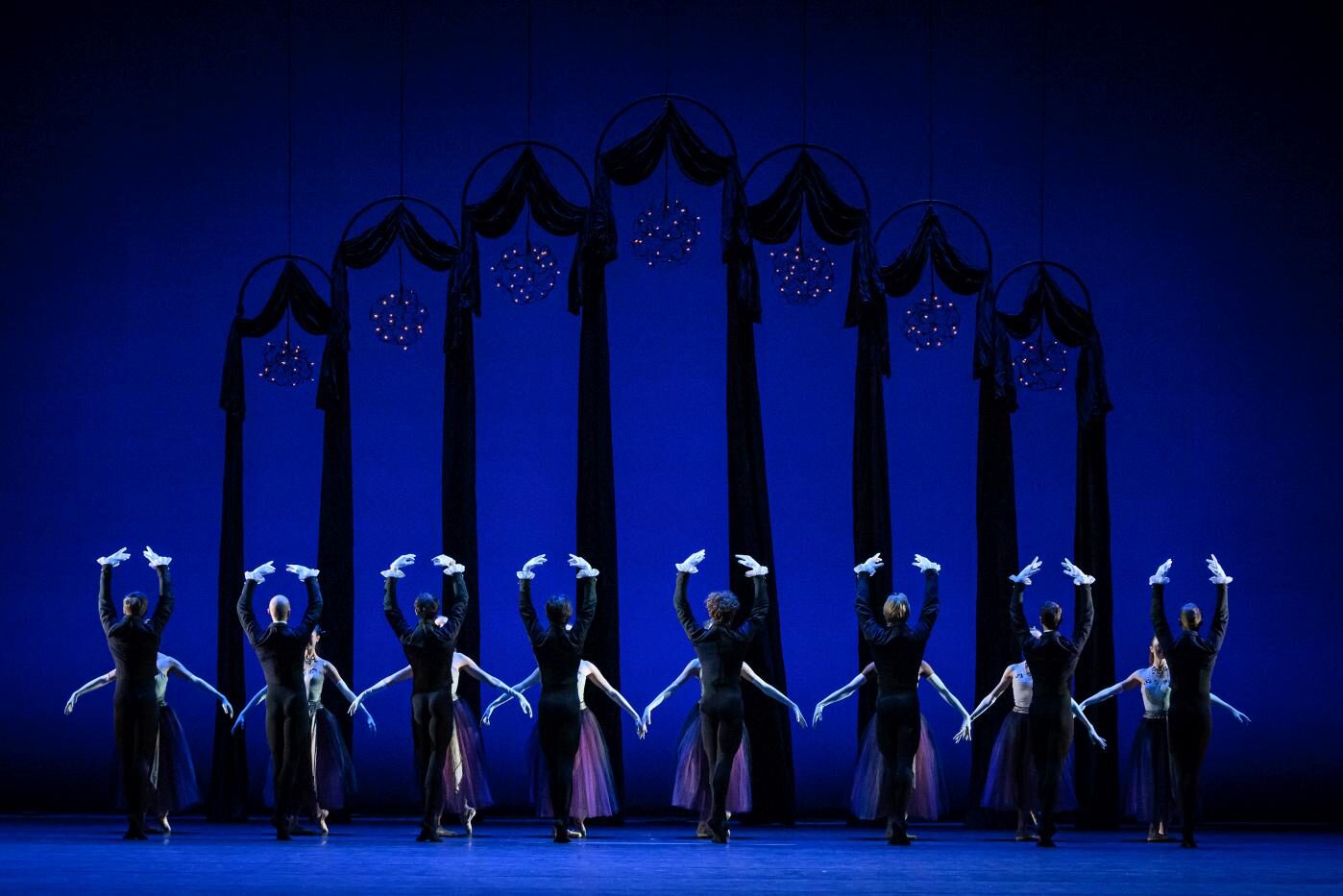Two Farewells at the Semperoper Ballet
“Theme and Variations” (Triple bill: “Theme and Variations”, New Suite”, “She Was Black”)
Semperoper Ballet
Semperoper
Dresden, Germany
March 30, 2017
by Ilona Landgraf
Copyright © 2017 by Ilona Landgraf
 Semperoper Ballet bid a double farewell on April 1st. True to his announcement last year, Mats Ek withdrew his works from the stage forever as he heads into retirement. “She Was Black”, originally choreographed in 1995, is among those that will retire with him. It has been part of the repertoire of the Dresden company for six years. When I learned about the 2nd goodbye, I thought it might be a premature April Fools’ joke – but it wasn’t. Fabien Voranger, the 36-year old principal of the company, ended his active dancing career with a final pas de deux in “She Was Black” in the middle of the season.
Semperoper Ballet bid a double farewell on April 1st. True to his announcement last year, Mats Ek withdrew his works from the stage forever as he heads into retirement. “She Was Black”, originally choreographed in 1995, is among those that will retire with him. It has been part of the repertoire of the Dresden company for six years. When I learned about the 2nd goodbye, I thought it might be a premature April Fools’ joke – but it wasn’t. Fabien Voranger, the 36-year old principal of the company, ended his active dancing career with a final pas de deux in “She Was Black” in the middle of the season.
Born in Aix-en-Provence in Southern France, Voranger was trained at the Opéra National de Paris and the Studio Ballet Colette Armand in Marseille. A Prix de Lausanne scholarship led him to The Royal Ballet School before signing his first contract with Roland Petit’s troupe in Marseille. Engagements at the Deutsche Oper Berlin and the Vienna State Ballet soon followed. As Voranger stated in an interview in 2015, he tended to move on to another company whenever he felt stuck in his artistic growth: “There will be always someone who can do more pirouettes than you, who is technically superior. So the most important thing in a career is to find someone who makes something of you.” (more…)




